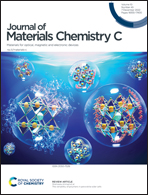Observation of long persistent luminescence in Ce3+-doped glass
Abstract
According to the rapid light response, Ce3+ ions alone as activators have seldom been reported to produce visible long persistent luminescence (LPL) among other materials, especially in the glass matrix. The corresponding discussion on mechanisms has always been insufficient for a long time. In this paper, the LPL behavior from Ce3+-activated borate glass was obtained, which kept the visible red-shifted luminescence persistent for 120 s. First, the related splitting properties of the Ce3+ 5d state were explored to illustrate the different photoluminescence performances under different excitation wavelengths. The LPL mechanism was then studied by exploring the sample structure, with an increase in the doping amount. No difference in macrostructure was found in nearly all samples with a lot of variation in LPL performance, which was indexed to the reduction-induced oxygen vacancies of different continuous depths arrangement. Results showed that a high concentration of effective oxygen vacancies with suitable depths for trapping excitation electrons was the key parameter for better LPL performance. These findings gave some new in-depth opinions on the properties of Ce3+-activated LPL behavior in the glass matrix.



 Please wait while we load your content...
Please wait while we load your content...